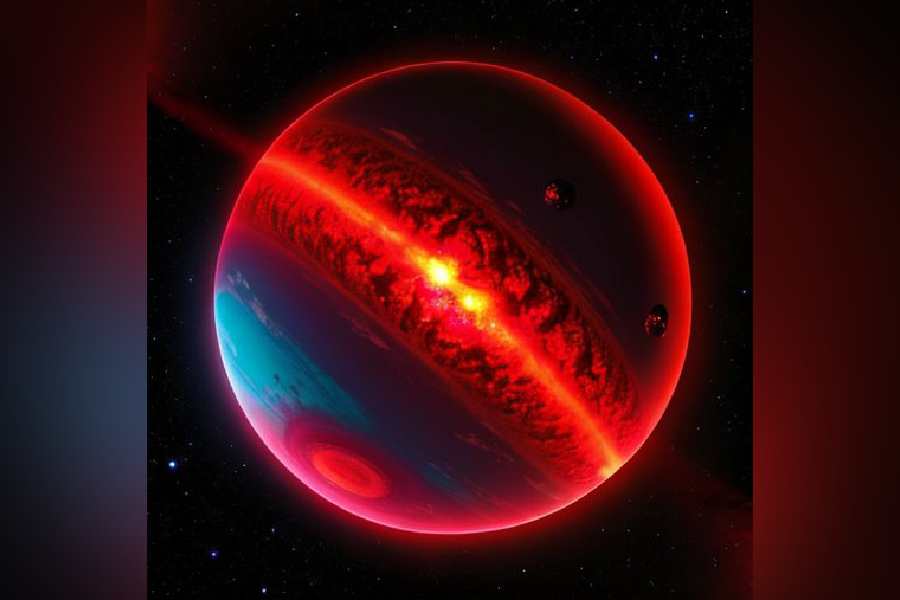Researchers have discovered a new "fiery, glowing red" exoplanet displaying intense volcanic activity similar to Jupiter's moon Io.
Further, the many active volcanoes on the exoplanet could be making its surface hotter than some stars, they said.
In a known star system about 66 light years away from Sun, the astrophysicists discovered signals for a new rocky planet about a third larger than Earth. The signals were captured by NASA's Transiting Exoplanet Survey Satellite (TESS), which searches for exoplanets or planets outside our solar system, orbiting the brightest stars in the sky.
The team, including researchers from the University of California Riverside, US, said that the star system, called HD 104067, was already known to harbour a giant planet. While gathering data on the planet, Stephen Kane, a professor of Planetary Astrophysics, "unexpectedly" found another "fiery" one, taking the count of planets in the star system to three.
"At optical wavelengths, you would be able to see a glowing, red-hot planet with a molten lava surface," Kane, lead author of the study published in The Astronomical Journal, said.
The newly discovered rocky exoplanet, named TOI-6713.01, has a lot in common with Jupiter's rocky innermost moon, Io, and is known to be the most volcanically active body in our solar system, Kane said.
The researchers explained that gravitational forces exerted by the other two planets in the system force this rocky planet into an elliptical or "eccentric" orbit around their star.
The star, to which TOI-6713.01 is closer than the other planets, "squeezes" the rocky planet as it orbits and rotates because of gravity, thereby causing tides on the planet's surface in the form of volcanoes.
Likening the scenario to "racquetball", Kane explained that the rocky inner planet gets hotter as it is constantly bounced around by the other two planets and squeezed by the star.
"It's been forced into a situation where it's constantly exploding with volcanoes," he said.
The extreme volcanic activity could be making the surface of TOI-6713.01 hotter than some stars, Kane said, as he calculated the surface temperature to be 2,600 degrees Kelvin or 2,330 degrees Celsius.
The intense volcanic activity on Jupiter's Io is also due to the gravity exerted by the other moons of the solar system's biggest planet, which itself has a strong gravitational pull, the researchers said.
Io is thus "forced" into an eccentric orbit around the planet, Kane explained.
"If the other moons weren't there, Io would be in a circular orbit around the planet and it would be quiet on the surface. Instead, Jupiter's gravity squeezes Io so much that it erupts in volcanoes constantly," Kane said.
On Earth, tides are the effect of moon's gravity on our oceans.
The researchers said the findings reveal a lot about the extremes in amounts of energy that can be pumped into a rocky planet, such as TOI-6713.01.
Further, tidal effects on planets haven't historically been a focus of exoplanet research, which Kane hopes might change with this discovery.
"While we know that stars contribute to the heat of a planet, the vast majority of the energy here is tidal and that cannot be ignored," he said.
Except for the headline, this story has not been edited by The Telegraph Online staff and has been published from a syndicated feed.











